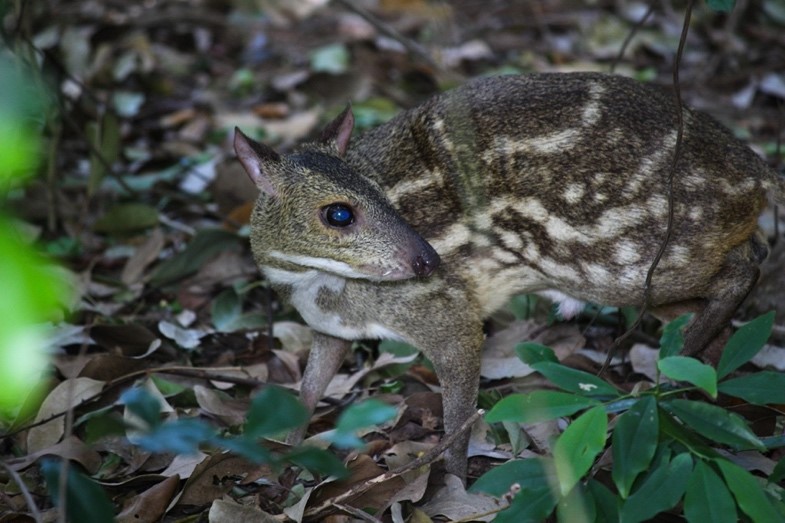Description

Disclaimer: Copyright infringement not intended.
Context
- A rare Indian mouse deer or spotted Chevrotain has been seen in the Kanger Valley National Park in Chhattisgarh.
About the Indian Mouse Deer
- Of the 12 species of deer found in India, the mouse deer is one of the smallest ones.
- Biological name: Moschiola Indica.
- Indian Spotted Chevrotain or Indian Mouse Deer (Moschiola indica) is an Artiodactyl e. a species of even toed ungulate in the family Tragulidae.
- It is the smallest deer in India and is highly nocturnal.
- It is a rare species to spot in wild since it is very shy and of cryptic nature.
- They are an ancient group of frugivorous ungulates, small-bodied and active both day and night.
- Other than being preyed upon by carnivores like dholes, tigers and leopards, Indian chevrotain plays an important ecological role as seed dispersers.
Location
- It is found mainly in rainforests of South Asia and Southeast Asia.
- It is found in India, Sri Lanka and possibly Nepal.
- It prefers living in dense forests.
- They are often found in evergreen, semi-evergreen and deciduous forests, as well as in grassland and commercial plantations.
Threats
- The species is facing serious threats due to wildfires, encroachment and poaching.
Conservation
- The conservation status of Indian mouse deer, according to IUCN (International Union for Conservation of Nature and Natural Resources), is Least Concern.
Diet
- It forages on forest floor for fruits, roots, leaves and herbs.
- It has occasionally been observed eating insects, crustaceans and even small mammals.
Description
- Head and body length in the species typically are 50 to 60 cm.
- It is dull brown in colour with three to four dotted white stripes going longitudinally along flank.
- The weight can reach between 3 to 4 kg.
- The males have no antlers, like those of other deer, but have visible upper canines.
- Most of the Chevrotains are digitigrades walking on toes only without letting heels to touch the ground.
MUST READ ARTICLES:
https://www.iasgyan.in/daily-current-affairs/kanger-valley-national-park
|
PRACTICE QUESTION
Q) How many of the following statements with reference to Indian Mouse Deer is/are correct?
1. Most of the Chevrotains are digitigrades.
2. The conservation status of Indian mouse deer, according to IUCN is Vulnerable.
3. It prefers living in dense forests.
- Only 1
- Only 2
- Only 3
- None
Correct Answer: 2
|

https://theprint.in/india/rare-indian-mouse-deer-spotted-in-kanger-valley-national-park-in-chhattisgarh/1602955/
















